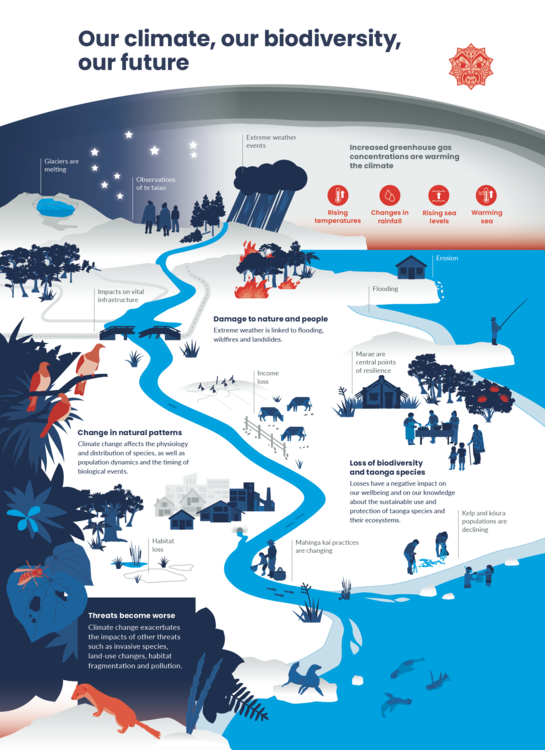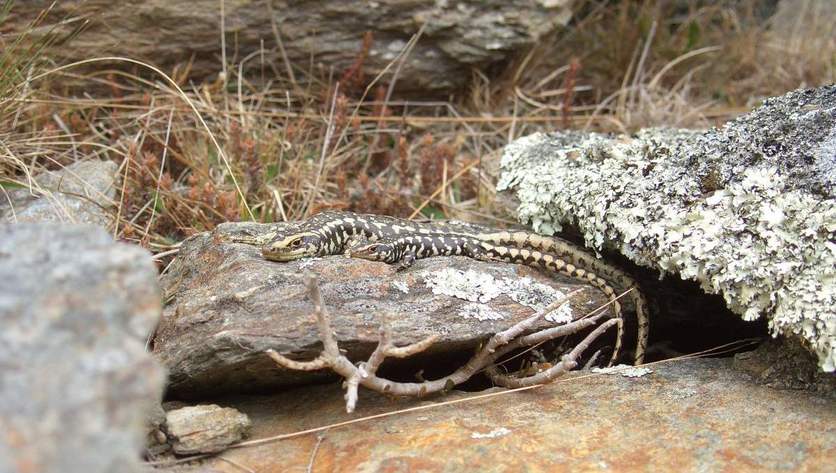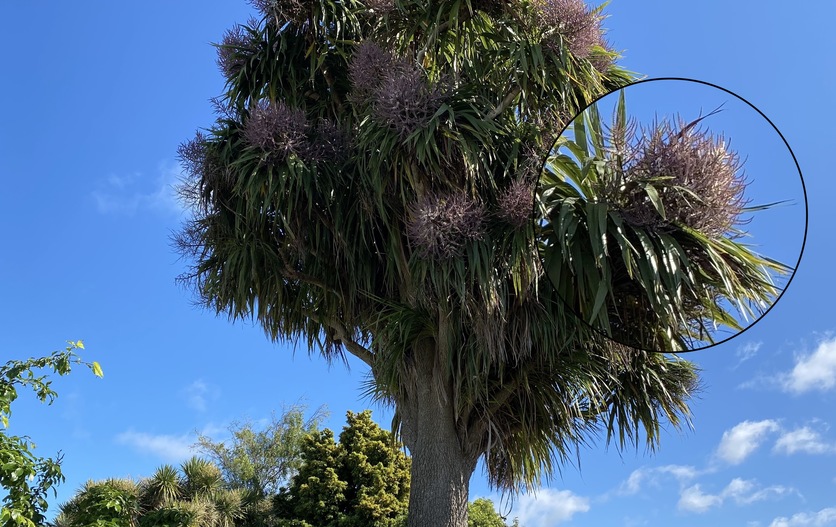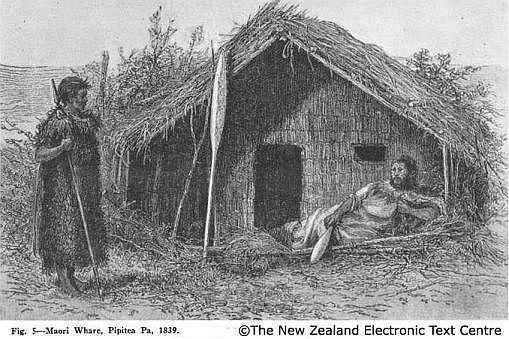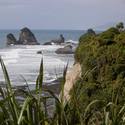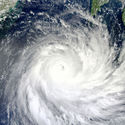Aotearoa1 New Zealand is home to an amazing diversity of living things, many of which are endemic2 – only found here. Nowhere else on the planet has such a range of bird and insect life but with so few endemic terrestrial3 mammals (just two species4 of bats). Many of our plants, fungi and freshwater fish are also endemic.
When we move from the land to New Zealand’s huge underwater area (the exclusive economic zone), the list of native5 and endemic species becomes truly enormous. Around 80% of our native species actually live in the ocean!
Threats to our native species
Our unique species have been facing numerous threats – from predators, myrtle rust, kauri dieback and other biosecurity issues. Climate change creates additional problems and has the potential to worsen existing threats. Atmospheric greenhouse gases are causing temperatures to increase. Because the Earth is a system where everything is interconnected, changes in one area can influence changes in all others.
Our atmosphere6 and climate7 support all aspects of our lives. They underpin the functioning of ecosystems8, our economy and communities, with consequences for our safety and security.
Our atmosphere and climate 2023 is an environmental report produced by the Ministry for the Environment and Stats NZ. It examines the most up-to-date environmental indicators and recent scientific evidence9 regarding the changing state of the atmosphere and climate. The report intentionally expands the integration of te ao Māori10 and mātauranga Māori11 as well as Māori research and evidence. The 2023 report places a primary emphasis on the effects of climate change12 on biodiversity13 and ecosystems. It also describes the impact of climate change on our public health, wellbeing, culture14, economy, infrastructure15 and recreation.
Examples of changes to native species
Climate change16 is causing many changes:
- Species’ physiology17 – for example, Otago skinks are well adapted18 to live in cooler climates. When their body temperatures become too warm, they seek shelter to cool down. This means less time out and about to find food or defend their territories.
- Species’ distribution – for example, native butterflies are predated by introduced wasps. Alpine19 butterflies have been able to avoid this risk as their habitats20 are above the wasps’ altitudinal limit. Warming temperatures allow wasps to live at higher altitudes and pose a danger to butterflies and other native invertebrates.
- Population21 dynamics – for example, tuatara have a system called temperature-dependent sex determination. Tuatara lay their eggs in soil, and the temperature of the surrounding soil determines the sex of the offspring – warmer temperatures produce males and cooler temperatures produce females. There’s a risk that warming temperatures will impact population viability22 due to higher ratios of males.
- The timing of biological events – for example, the frequency23 of mast events24 – when plants produce a larger than normal amount of seeds – has been linked to changes in temperature25. Beech mast can lead to an outbreak of pests, which poses an increased threat to native animals.
Although these examples focus on individual species, all of them are an integral part of complex food webs and ecosystems. Changes can have cascading effects to other parts of the system. The impact of climate change on one species can ripple through a food web and affect a wide range of other organisms. It is like a chain of reaction and has the potential to disrupt many ecological processes.
Species can persist in changing environments by either moving to better conditions or by adapting. Some species are highly adaptable and can tolerate various climatic conditions, while others can’t. For example, warming may force some species to migrate to higher elevations where temperatures are more conducive to their survival. Similarly, as sea level rises, saltwater intrusion into a freshwater system may force some key species to relocate or die.
Visualising the impacts on biodiversity
Our climate, our biodiversity, our future is an interactive storymap that uses a collection of stories arranged to show the interconnection of ki uta ki tai – mountains to the sea – which illustrate how the climate is changing, how it impacts our indigenous26 biodiversity and what is being done to help. This activity helps educators deepen student engagement with the storymap.
Impacts on humans
Humans are part of te taiao27, not separate from it. Climate change also has impacts on people and our cultural, social and economic wellbeing. For Māori, climate change threatens the loss of culturally significant land, taonga species28 and resources affecting the perpetuity of mātauranga29 and tikanga30.
The combined climate and biodiversity crisis pervades almost every aspect of our life and society. Shifts in these systems threaten our safety and security, jeopardise the links between people and the environment, and affect our physical, economic, mental and cultural health.
Our atmosphere and climate 2023
Indigenous knowledge is impacted by changing climates, seasons and loss of taonga31 species, but it is also adaptable. For example, traditional tohu, which are used to help forecast changes in the natural environment, are becoming less reliable – the timings of tohu are changing. Māori developed detailed knowledge of tohu32 through close interactions with local environments and processes over time and have been able to contextualise the effects of climate change at local scales.
The changing climate does require knowledge adaptation to happen quite quickly, and this may affect the environmental observations of the maramataka in some areas and undermine mātauranga Māori. However, a changing climate is not new for Māori. Māori have always been scientists through navigating expansive oceans, applying a detailed regionally specific division of time and being immersed with the natural rhythms of the environment.
Explore additional Māori insight – māramatanga Māori – related to climate and impact on biodiversity.
Human intervention (emissions reduction and biosecurity33 responses), mitigation34 and adaptation can create change. Strong evidence – through the use of two knowledge systems here in Aotearoa – positions us well to best deal with the threat of climate change and biodiversity loss.
Nature of science
The complexity of the climate system means it can take time for observations related to climate change to be confirmed statistically. Aotearoa has some valuable long-term environmental datasets. Quality data35 is crucial for understanding how actual observed changes are tracking with climate projections and whether any adjustments in the projections are needed.
Related content
Explore additional Māori insight – māramatanga Māori – related to climate and impact on biodiversity.
Biodiversity concepts:
- Biodiversity – article
- Seed banks – protecting biodiversity – article
- Population biology – article
- Introducing biodiversity – activity
- Threats to biodiversity – activity
Climate change resource curations:
- Our atmosphere and climate – introduction curates a suite of resources developed in collaboration36 with the Ministry for the Environment and Stats NZ. Resources highlight climate connections and implications for Aotearoa and for Māori. They have a strong focus on evidence and data.
- Our atmosphere and climate 2020 – a collection focusing on the 2020 report.
- Climate change – a collection with a focus on the science of climate change and associated socio-scientific37 issues, including melting ice and sea-level rise.
- Climate change (HoS) supports the House of Science Climate Change resource kit but it is also useful for anyone exploring what is climate change, ocean acidification38, sea and land water, how climate change affects Māori, the Earth’s interacting systems and ideas to tackle these wicked problems39 in the classroom.
Useful links
Stats NZ and the Ministry for the Environment report on the state of different aspects of the environment every 6 months and the environment as a whole every 3 years. Find their reports here.
This New Zealand Herald article looks at how climate change is throwing beech forests ‘out of sync’.
This American Scientist article looks at threats to tuatara.
Acknowledgement
This resource has been produced with the support of the Ministry for the Environment and Stats NZ. © Crown copyright.
- Aotearoa: The Māori name for New Zealand, meaning Land of the Long White Cloud.
- endemic: Native to only one location. For example, species endemic to New Zealand naturally occur only in New Zealand but may have been introduced elsewhere in the world.
- terrestrial: Belonging or from the land. This term is often used to describe plants and animals, meaning they live on the land.
- species: (Abbreviation sp. or spp.) A division used in the Linnean system of classification or taxonomy. A group of living organisms that can interbreed to produce viable offspring.
- native: A species that lives naturally in a country, as opposed to species that have been introduced by the activity of humans.
- atmosphere: 1. The layer of gas around the Earth. 2. (atm) A non-SI unit of pressure equivalent to 101.325 kPa.
- climate: The weather conditions of an area averaged over a series of years, usually 30 or more.
- ecosystem: An interacting system including the biological, physical, and chemical relationships between a community of organisms and the environment they live in.
- evidence: Data, or information, used to prove or disprove something.
- te ao Māori: Māori world view (belief system), which provides a Māori epistemology (study of knowledge) of source, origin, knowledge, and application.
- mātauranga Māori: A contemporary term referring to Māori knowledge, Māori ways of knowing and associated practice.
- climate change: The large-scale, long-term increase in the Earth’s average temperatures, with associated changes in weather patterns. There is significant scientific evidence that warming is due to increased quantities of greenhouse gases in the atmosphere, with most of the rise due to human activity.
- biodiversity: The range of species found in a particular region. The more species that exist (the higher the biodiversity), the more likely it is that an ecosystem will survive episodes of change.
- culture: 1. A group of living cells growing in a controlled, artificial environment like a laboratory. 2. The ideas, customs and social behaviour of a particular people or society.
- infrastructure: The basic facilities and services needed to support a community, such as transport, water, power, wastewater and stormwater management, and public institutions including schools, post offices and prisons.
- climate change: The large-scale, long-term increase in the Earth’s average temperatures, with associated changes in weather patterns. There is significant scientific evidence that warming is due to increased quantities of greenhouse gases in the atmosphere, with most of the rise due to human activity.
- physiology: A branch of biology that studies the functions and activities of living organisms, including all physical and biochemical processes.
- adaptation: A change in the structure or function of something. In biology, a change in a species, as a result of natural selection. Individuals with a particular feature (adaptation) are more likely to survive and reproduce than individuals without this feature.
- alpine habitats: High in the mountains, beyond where trees grow.
- habitat: The natural environment in which an organism lives.
- population: In biology, a population is a group of organisms of a species that live in the same place at a same time and that can interbreed.
- viability: Whether something is likely to work or not.
- frequency: 1. How often something occurs within a specified time. 2. The number of waves per second that pass a given point or the number of waves produced per second by a source.
- mast event: The production of larger than usual amounts of seeds, which means mice and rat numbers increase rapidly and in turn stoat numbers increase because they feed on the mice and rats.
- temperature: A measure of the degree of hotness or coldness of an object or substance. Temperature is measured with a thermometer calibrated in one or more temperature scales. Kelvin scale temperature is a measure of the average energy of the molecules of a body.
- indigenous: Originating and living or occurring naturally in an area or environment. People who are the original inhabitants of an area, or their descendants.
- taiao: The natural world, Earth.
- taonga species: Species or biota that are of value to Māori or hold cultural significance to Māori, which may include introduced species.
- mātauranga: Māori cultural knowledge and understanding of the world; Māori wisdom.
- tikanga: Māori customs and traditions that have been handed down from the ancestors.
- taonga: Within the Māori world view, a taonga is a treasure that represents whakapapa in relation to a kin group’s estate and tribal resources. Amongst many things, a taonga can be a living creature, a landscape, an object or a song. Taonga are important to the mana (honour and prestige) of the iwi associated with them.
- tohu: A sign, marker or pou (post).
- biosecurity: The process of preventing, detecting and controlling unwanted pests and diseases.
- mitigation: Reducing the severity of something.
- data: The unprocessed information we analyse to gain knowledge.
- collaboration: Working together with a common purpose.
- socio-scientific: Combining social and scientific factors.
- ocean acidification: Decrease in ocean pH due to higher levels of dissolved carbon dioxide.
- wicked problem: Complex problems that are extremely difficult to solve because of the many different aspects that interact. They often involve environmental, economic or political issues or a combination.
- māuiui: A Māori term to describe being sick, fatigued or weary.
- iwi: Māori tribe or large community, often consisting of several hapū (clans) bound together by common ancestors.
- flora: A flora (with a small f) refers to the plant life occurring in a particular region. A Flora (with a capital F) refers to a book or other work that describes and identifies a flora.
- fauna: Animals.
- mahinga kai: Generally refers to indigenous freshwater species that have traditionally been used as food, tools or other resources.
- whenua: Land.
- holistic: Emphasising the importance of the whole and the interdependence of its parts, looking at the entire system. In healthcare, this means looking at all aspects of a patient's well-being and not just treating a particular pain or disease.
- pounamu: The Māori name for jade and related minerals, also commonly called greenstone in New Zealand. Pounamu is a taonga within Māori culture. Ngāi Tahu are kaitiaki of the pounamu.
- rongoā: Traditional Māori medicine.
- sustainable: A way of using natural products so they are available for future generations.
- kaitiakitanga: A Māori term that encompasses ideas about care and guardianship of the sea, sky and land – the environment. Kaitiaki refers to those who carry out kaitiakitanga such as tangata whenua (people of the land).
- manaakitanga: Showing respect, generosity and care for others – a very important te ao Māori concept as it secures the strength of whānau and communities.
- infection: Invasion of the body or a species by something that could be harmful or cause a disease.
- rākau: A Māori for word trees, wood or sticks.
- whānau: Extended family.
- Te Waipounamu: The Māori name for the South Island of Aotearoa New Zealand.
- āhuarangi hurihuri: Climate change.
- hurihanga waro: Carbon cycle.
- carbon cycle: The process by which carbon passes through the natural world.
